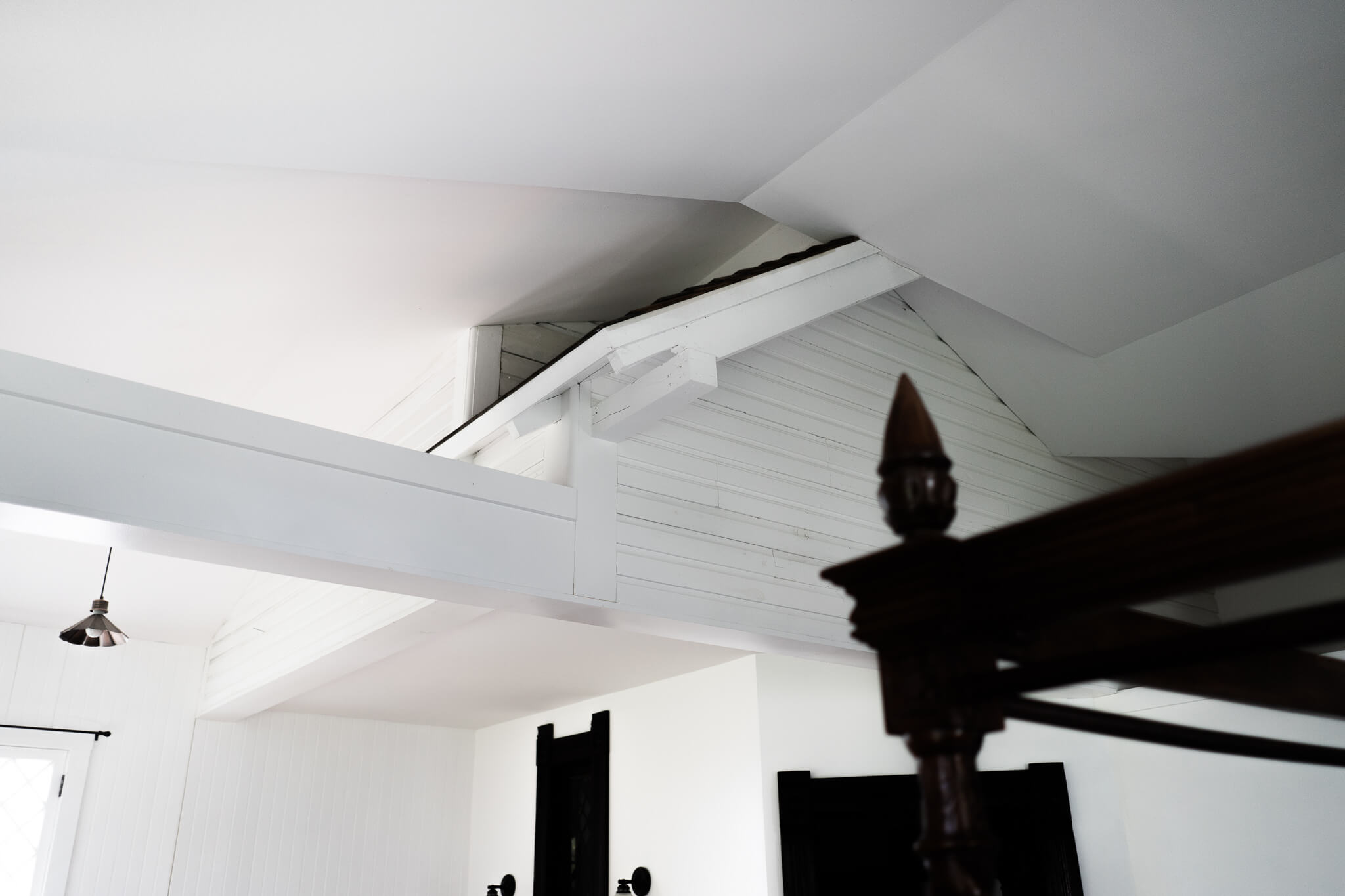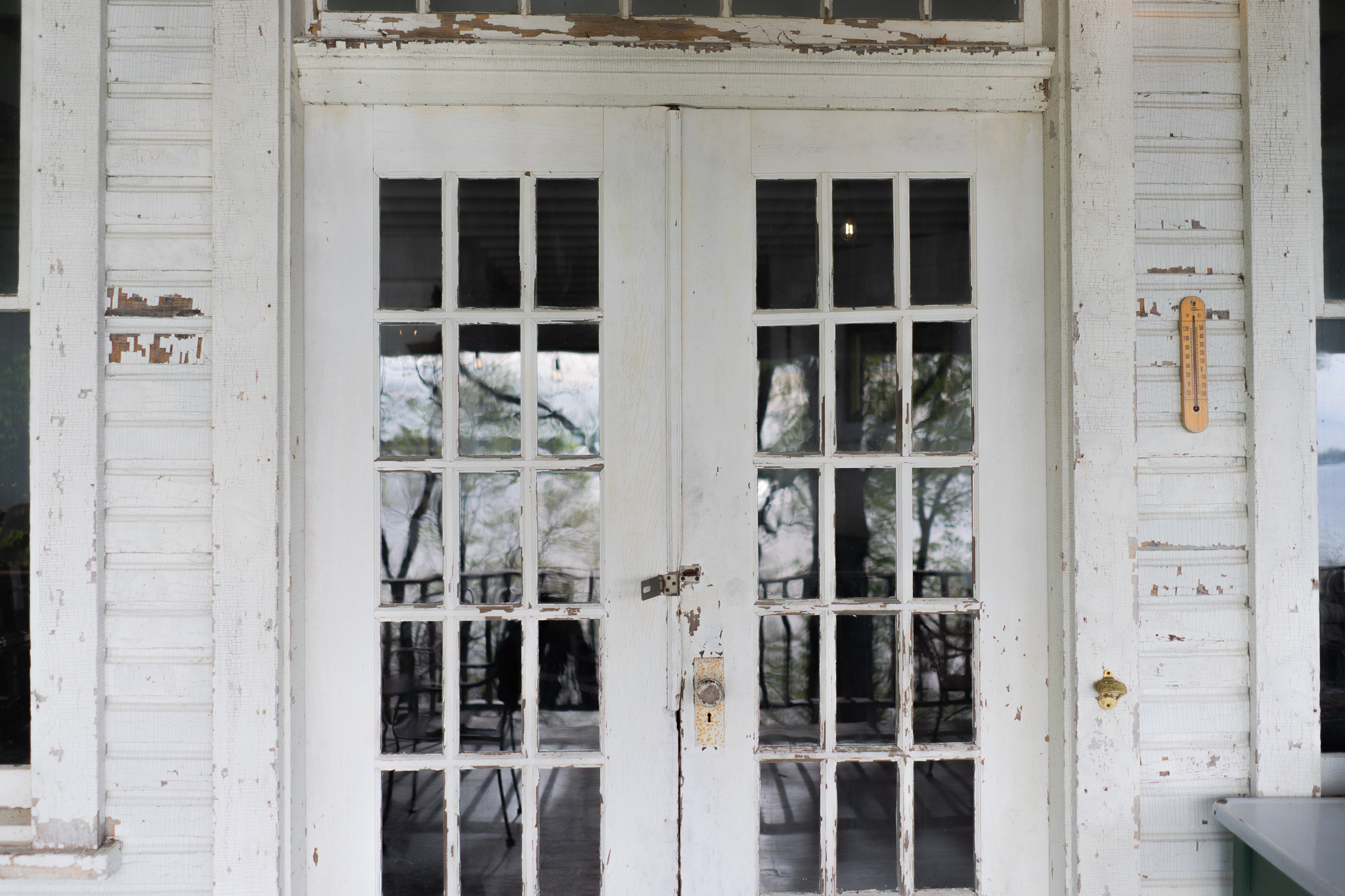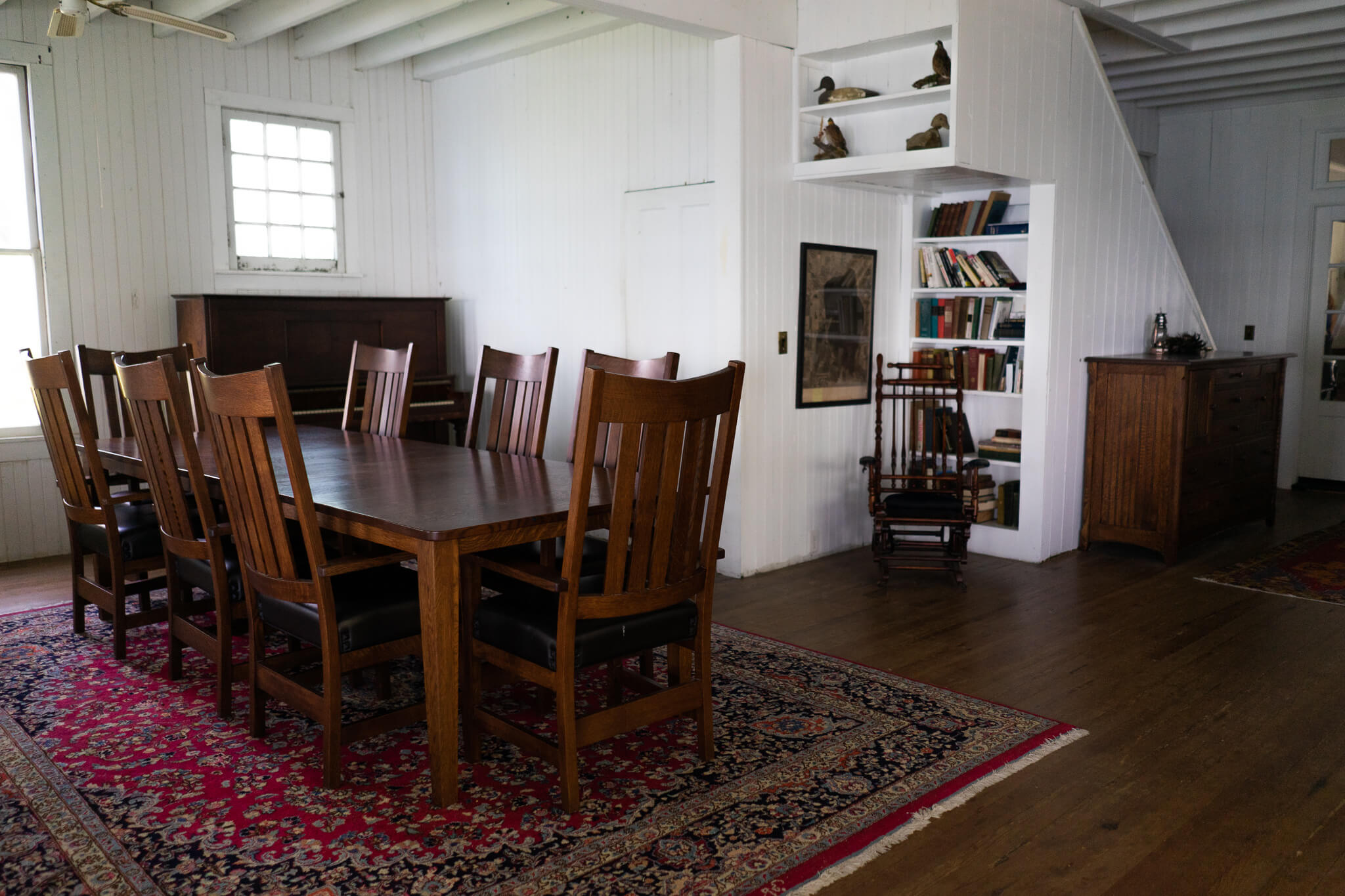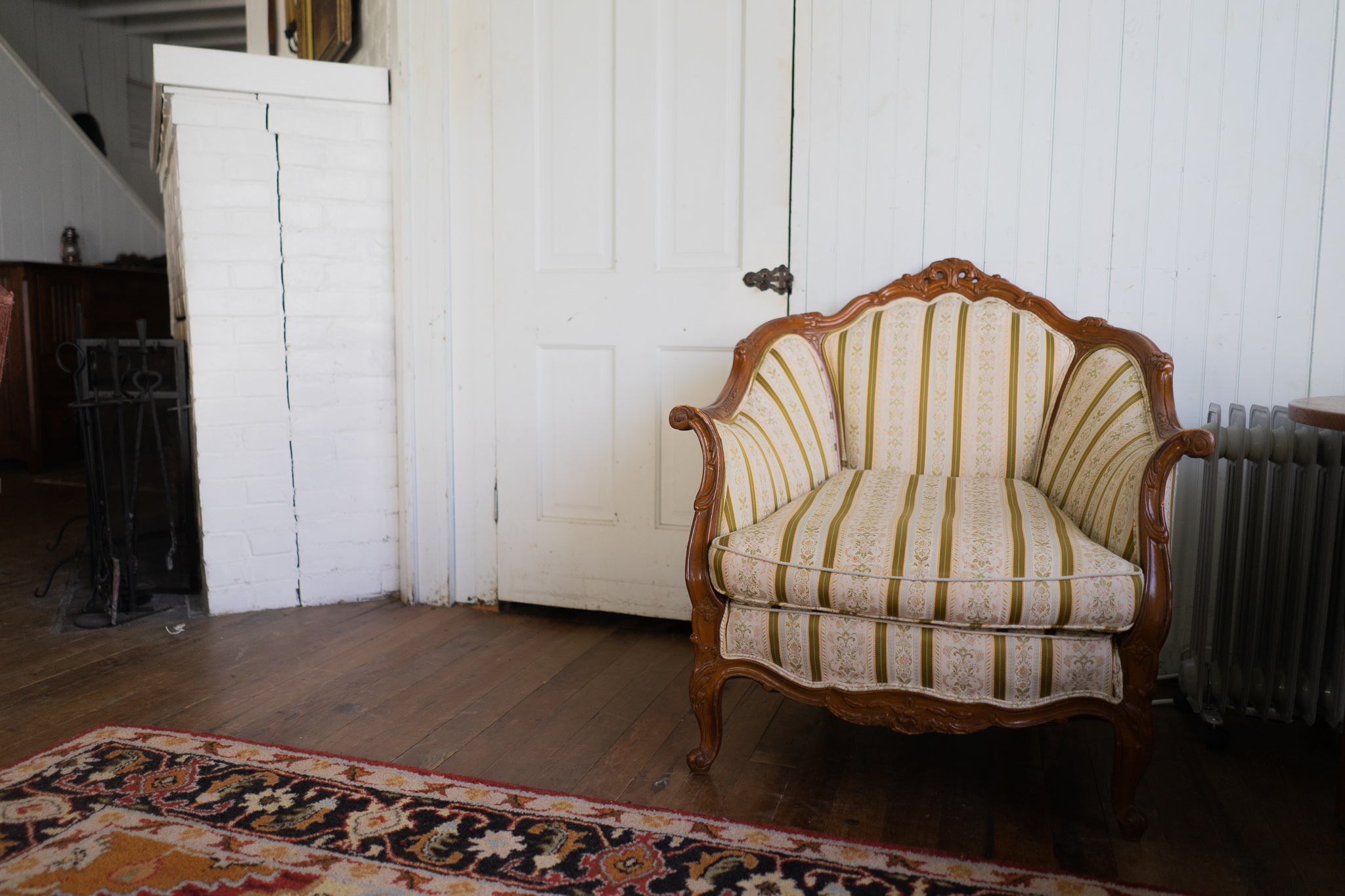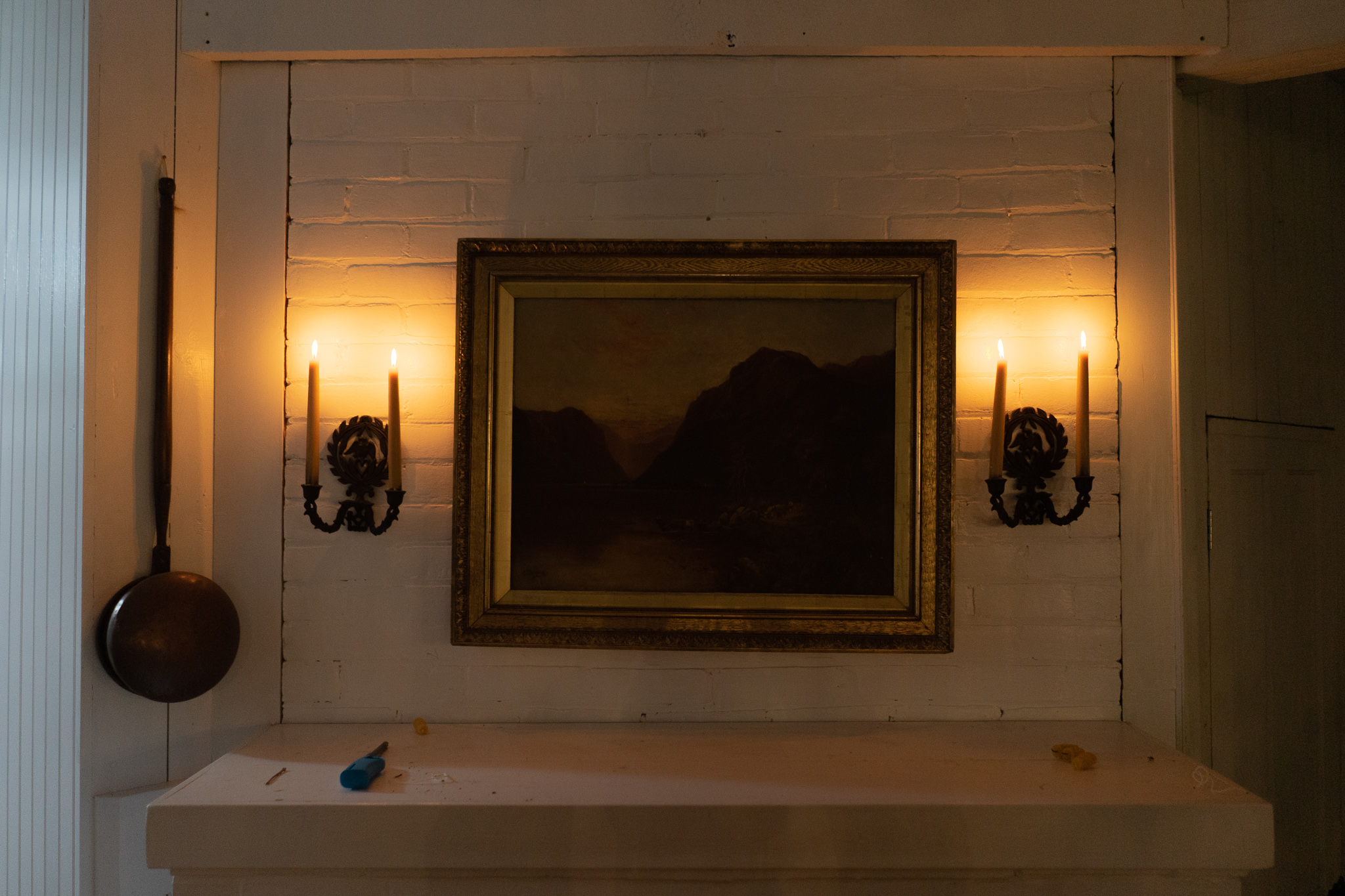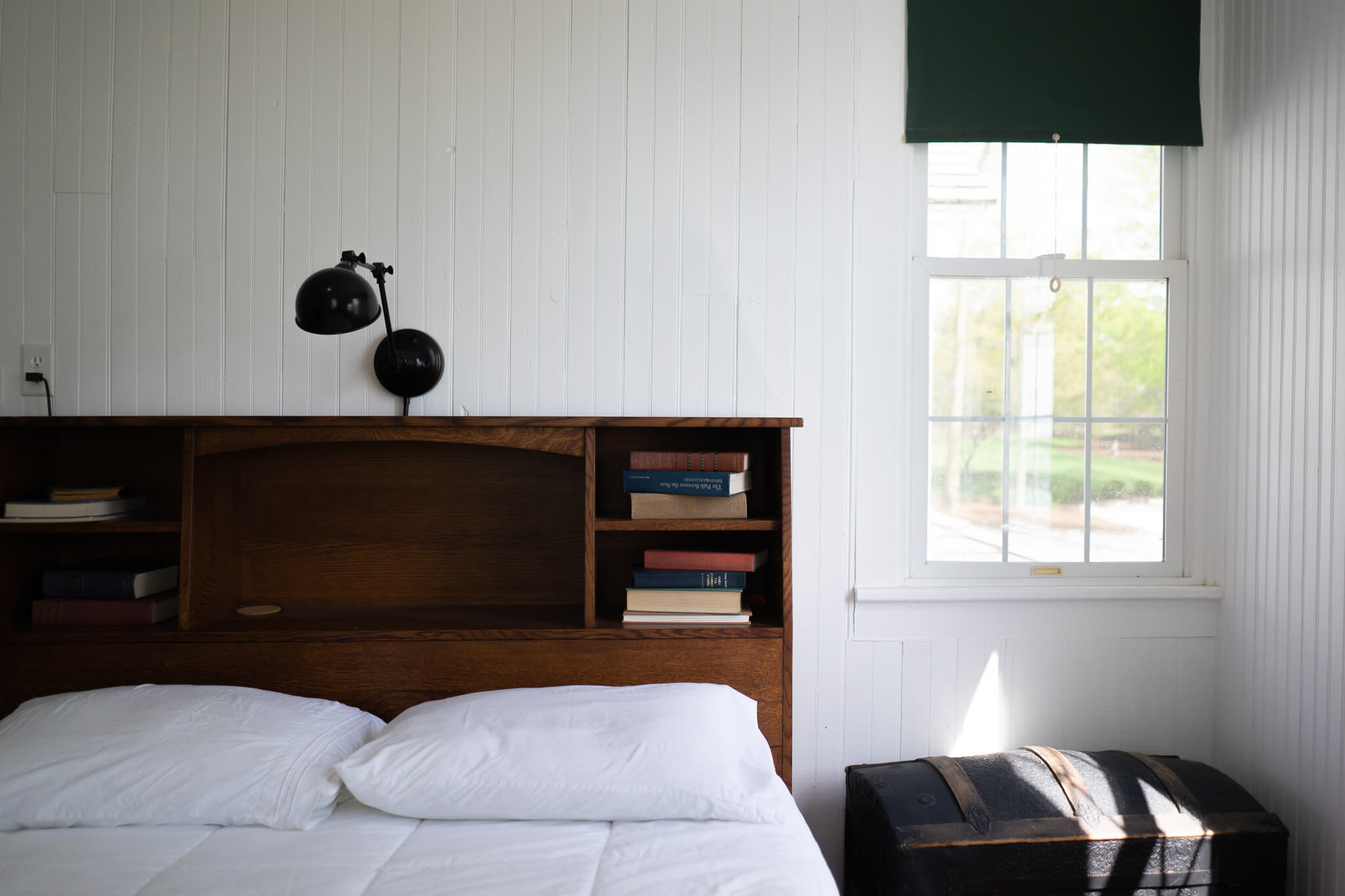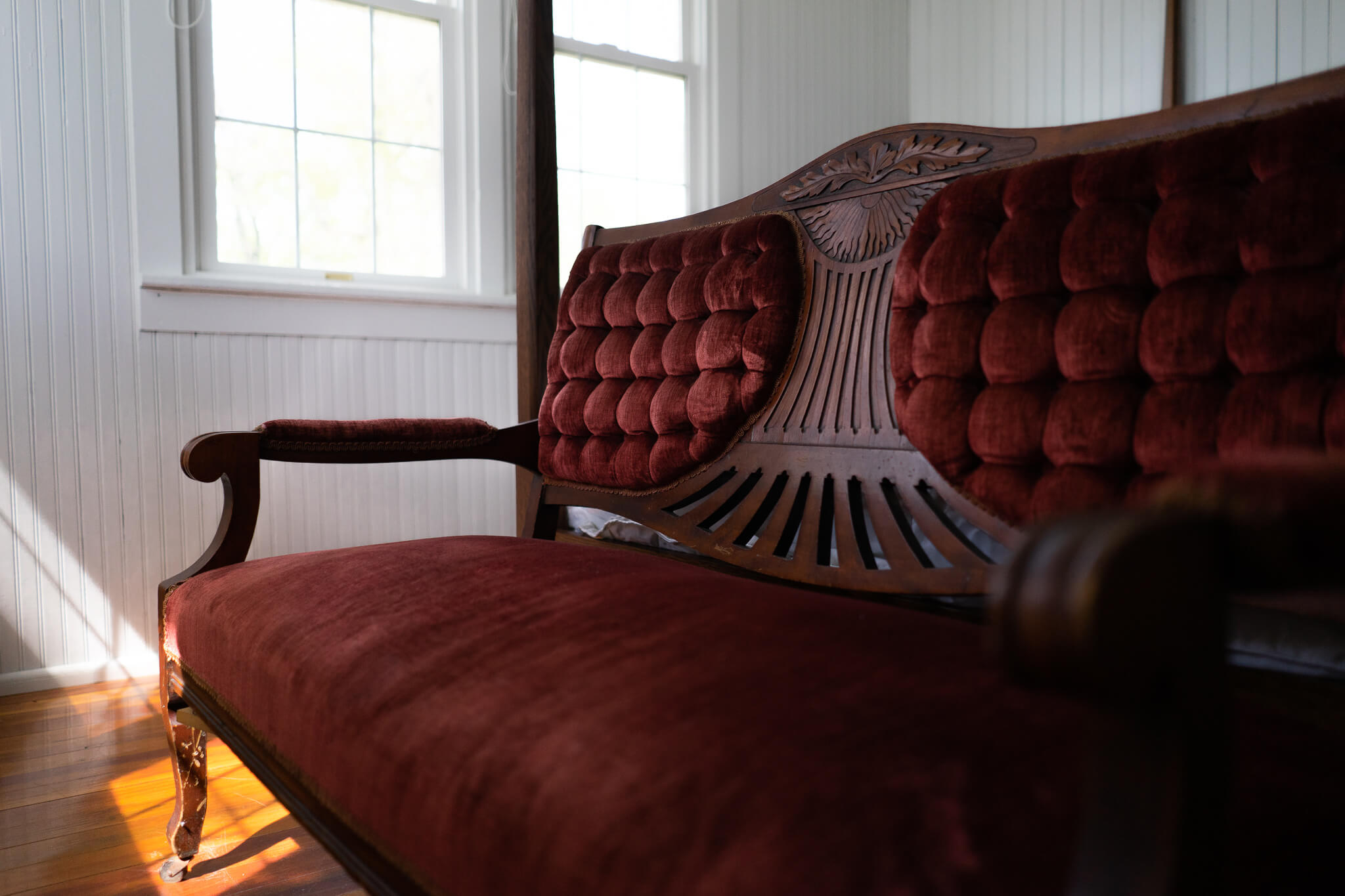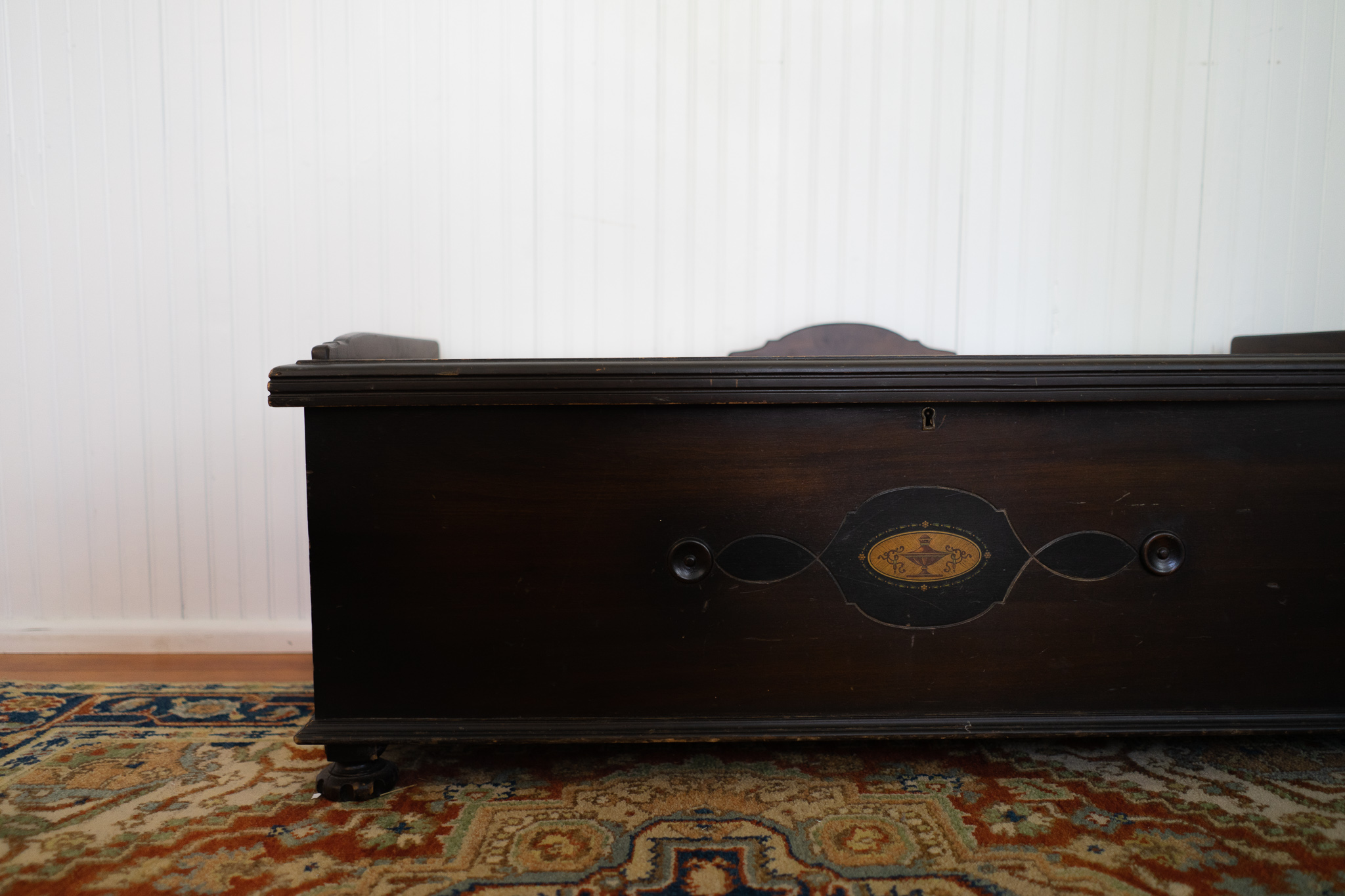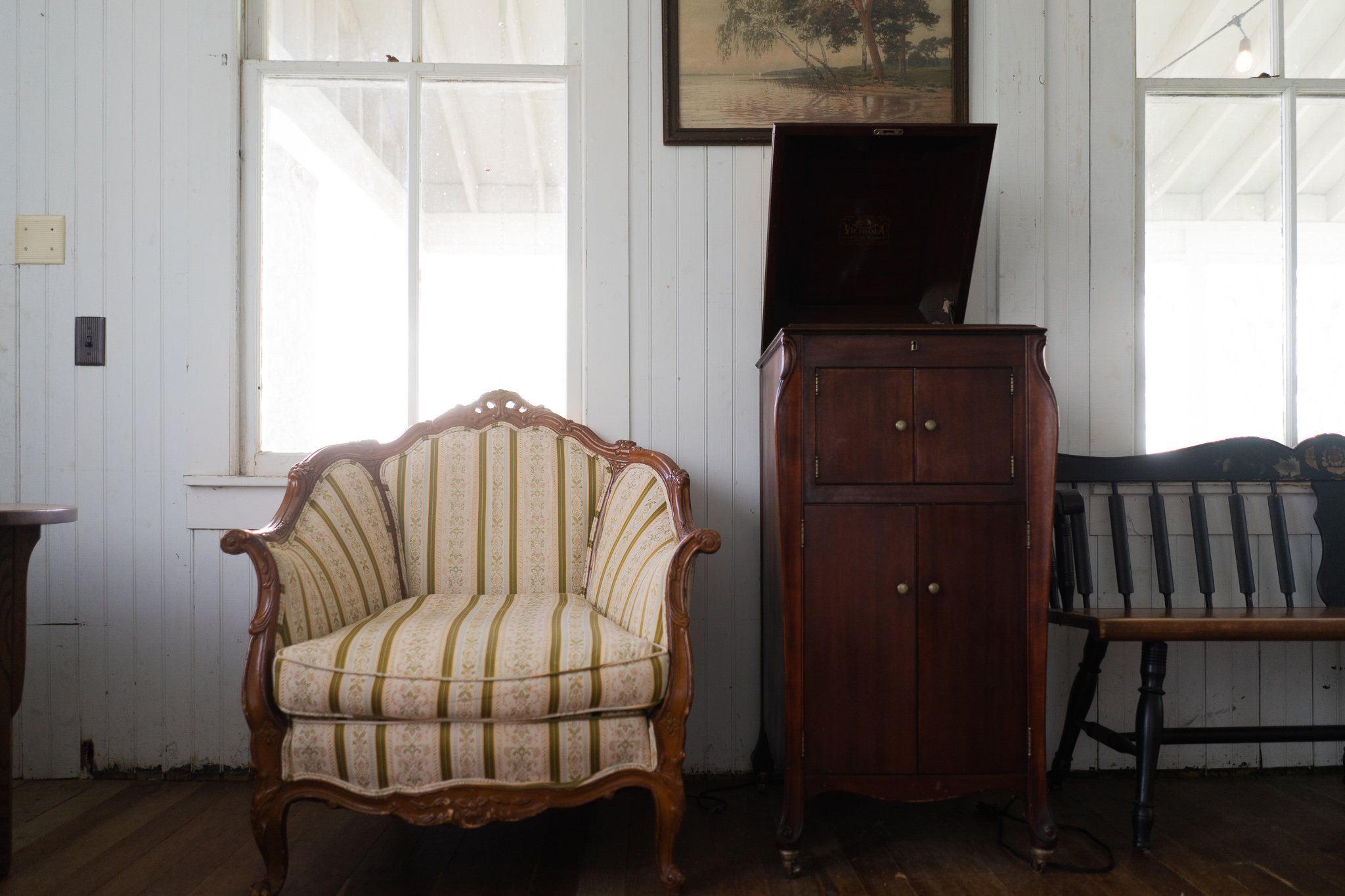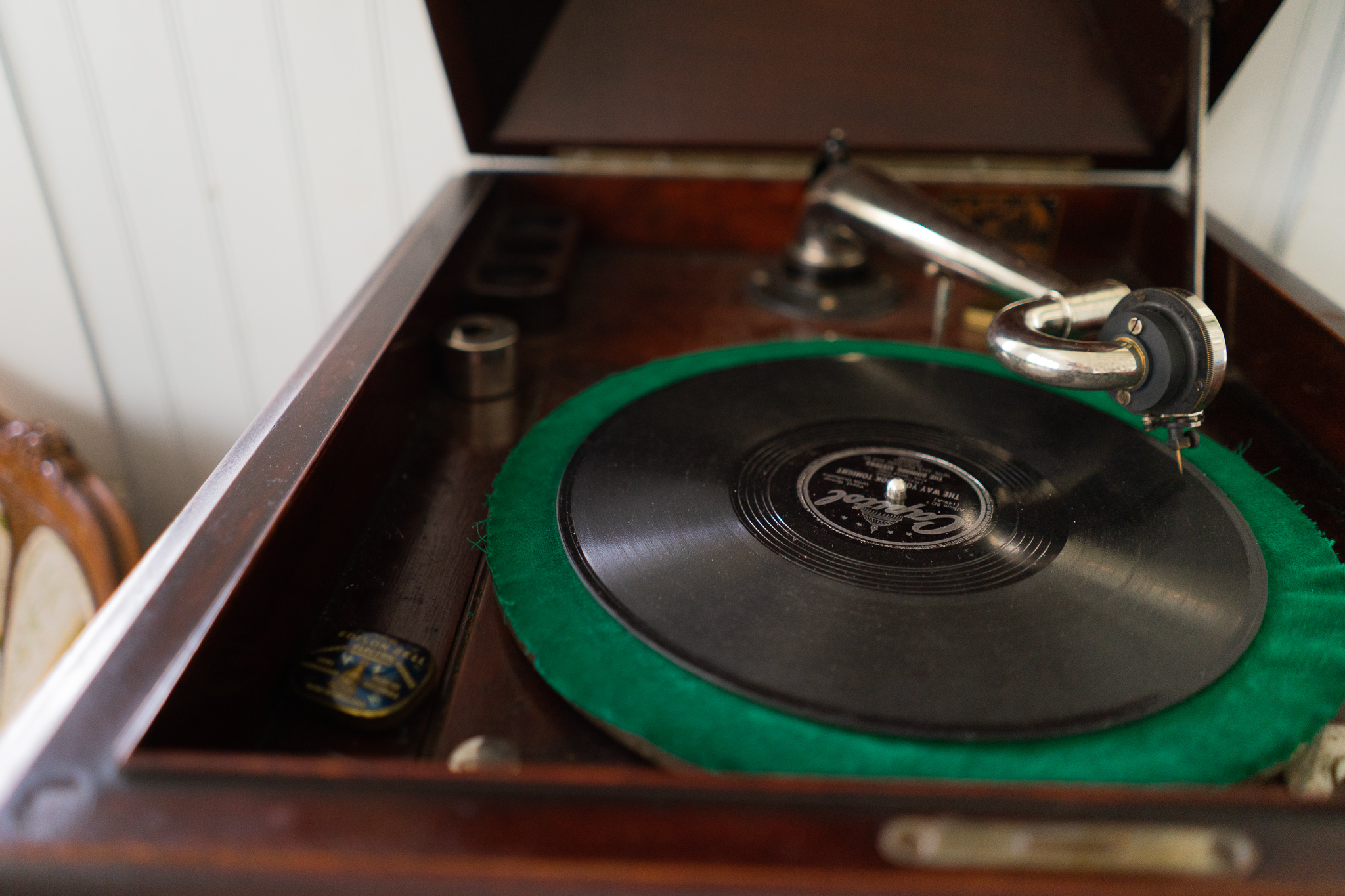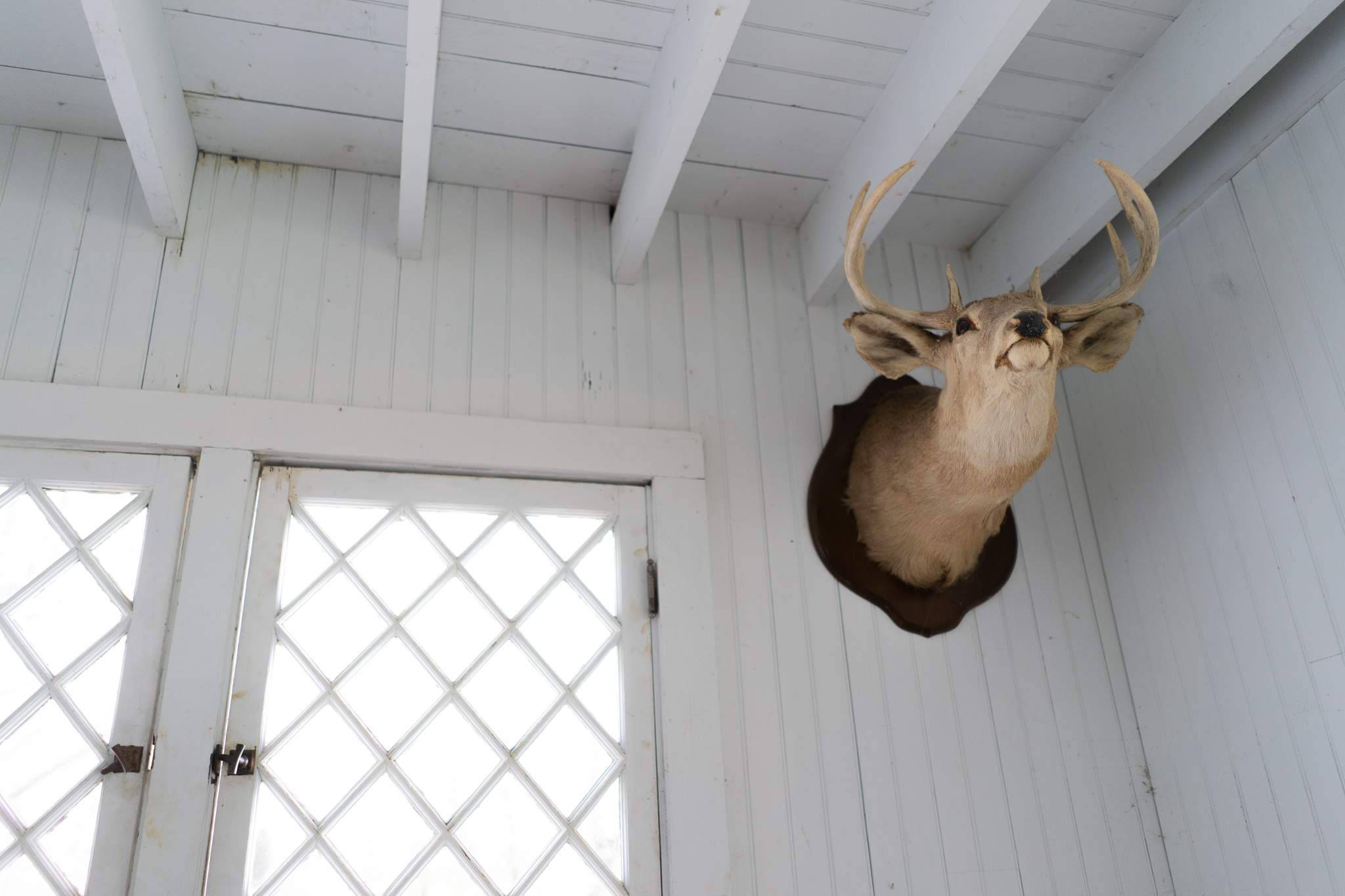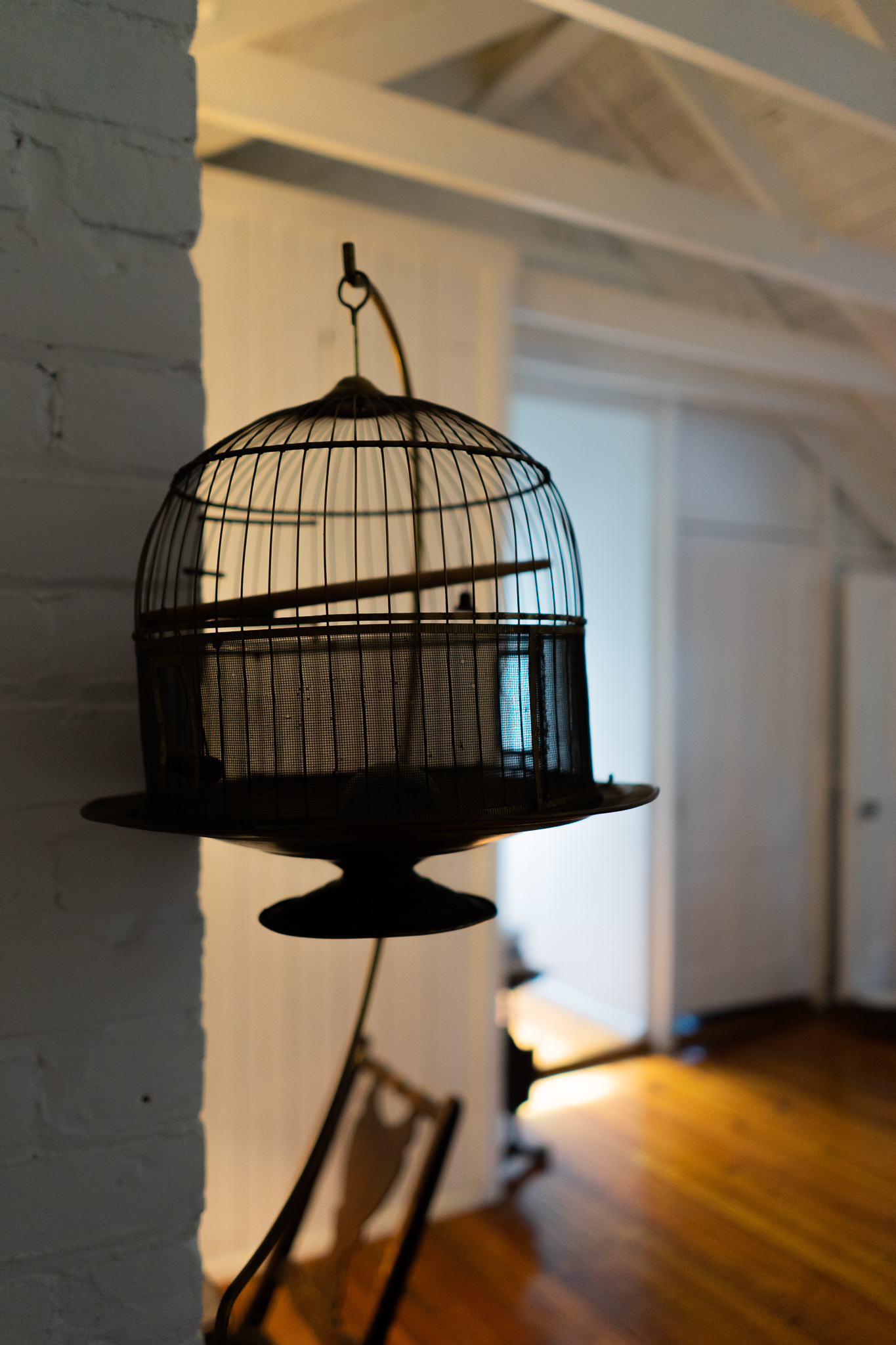The Vonnegut House
It is not often that we come across a place that resonates deeply with us. When we do, it should be celebrated — in words and in images. For acclaimed novelist Kurt Vonnegut, that place was a small wood frame house in Indiana:
The great American disease is loneliness. We no longer have extended family. But I had one. There were lots of Vonneguts in the phone book...And at Lake Maxinkuckee there were a row of cottages, one of which we owned, and so I was surrounded by relatives all of the time... It was heaven.
Built in 1889, the cottage and neighboring homes became a summer compound for the Vonnegut family, the place at which they would gather relatives from across the country for much of the 20th century.
On the first weekend of May, thirteen friends traveled from South Bend to Culver, Indiana. We would spend three days in the Clemens Vonnegut Jr. House, appreciating the people and the nature around us just as its previous inhabitants once had — reading on the porch, talking over communal dinners, and exploring the rich history that has drawn people to the lake and adjacent town for nearly two centuries.
This is a story of families and towns, of growth and decline. Thanks to the courage of a few people, it is ultimately a story of preservation and renewal. It a story yet unfinished, but without the willingness of friends to buy and renovate a historic landmark, without the dedication of an archivist to document history, there would be none at all.
An Enchanted Body of Water
Lake Maxinkuckee is situated in the northern central part of Indiana, roughly equidistant from Chicago and Indianapolis. The Potawatomi inhabited the area until the 1830s, when U.S. government treaties mandated their removal in favor of European settlers. The new occupants founded Union Town, which would come to be known as Culver.
Since the mid-19th century, the city has swelled with city dwellers looking for a reprieve, and from the moment we arrived, we understood the forces that have drawn them — a simplicity, a plainness of the landscape that allows you to take a breath and let imagination run a bit more free. Kurt Vonnegut writes it better than we could:
I made my first mental maps of the world ... on the shores of Lake Maxinkuckee. Because everything about that lake was imprinted on my mind when it held so little and was so eager for information, it will be my lake as long as I live … (2007)
Dearest Catey and Jim ... that is good that you two are keeping the Maxinkuckee dream alive. That will always be an enchanted body of water to me, my Aegean Sea, perfect in every dimension. (1977)
Helen Cramer and Kathryn Keur photographed sitting on the house’s East shore dock on the night of our arrival.
Vonnegut’s imagination was not the only thing that ran free at Maxinkuckee. Having immigrated to Indianapolis in the mid-19th century, the family subscribed to the philosophy of the German forty-niners, emphasizing the benefits of physical fitness and time out-of-doors. Theirs was a philosophy that had children running through the woods and gazing at the stars, engaging wholeheartedly with the vastness of nature.
In the documentary Unstuck In Time, Vonnegut recalled one night at the cottage, when he, staring at the stars and uninterested in conversation, shrieked, “There is Tralfamadore!” This mythical planet would become the setting for Slaughterhouse Five, and a frequent point of reference in his other novels.
It is a small thing, but something nonetheless, to sit on that same platform and stare up at the stars. To know that here, a great writer of our time found some small spark of inspiration. That here, he came to know a world we could not comprehend until he wrote about it. It’s powerful to sit in a place like that, and we’re grateful it was preserved.
Kurt Vonnegut photographed with Robert Weide of Whyaduck Productions during the filming of Kurt Vonnegut: Unstuck In Time. The Clemens Vonnegut Jr. House is visible in the background.
A bookshelf inside the original house’s great room holds most all of Vonnegut’s work. Kyra McAndrews read two – Slapstick and A Man Without a Country – during our three-day stay.
It may come as a surprise, but Kurt Vonnegut was not the only famous author to find clarity at Lake Maxinkuckee. The lake has been home to novelist Booth Tarkington and poet James Whitcomb Riley. Lew Wallace wrote part of the novel Ben Hur on the lake, and Meredith Nicholson — whose novel The House of a Thousand Candles is set in the Culver area — was inspired by Nicholson's visit to a similar house on the East Shore.
The creative community was strong at Lake Maxinkuckee, earning it the gentle moniker of "non-conformist”. So we learned from a man who has spent his entire professional life aggregating their story in an unlikely place.
Castle in the Air
Henry Harrison Culver first came to the lake seeking health in the same way the Vonneguts had. An Ohio-born entrepreneur and owner of the Wrought Iron Range Company, he had spent much of his life traveling through the central States. The wear of travel brought with it significant health troubles, and a transformative summer near his wife’s childhood home on Lake Maxinkuckee proved the medicine Culver badly needed.
When Fall came I was a different man, It had such a glorious effect on my health that I determined to acquire property here. I bought ninety-eight acres on the northeast corner of the lake.
On these ninety-eight acres, and an additional 208 purchased soon after, Culver at first attempted to create a resort-style summer camp modeled after Chautauqua, New York. Teddy Roosevelt’s philosophy of “robustness” ruled the day, and the summer camp hoped to instill courage and energy into young Americans. The camp proved less than successful, but Culver’s ambitions only grew. He eventually founded a full-time boarding school dedicated to the same ends—Culver Academy.
Culver Academies historian Jeff Kenney photographed in their archives flipping through old student scrapbooks.
The military academy opened on September 24, 1894 to forty-five students from seven different states. From its earliest days the school displayed grand vision: in 1899 the first international cadet, a Russian student who would later become a Cold War spy in Soviet Russia, graduated from Culver. The Black Horse Troop began in 1897 as sixteen mounts from the Cleveland National Guard, and by 1912, escorted Woodrow Wilson in his inaugural parade. That tradition has continued for more than one hundred years, showcasing on a national stage a tradition of discipline, formality, and excellence.
All this and more, we learned at the Culver Academy Archives. We had stopped by anticipating a cursory introduction to the place’s history. We met Jeff Kenney instead, a local historian who has dedicated the bulk of his professional life to preserving the stories of the Academy and those that live around it. It was a valuable window into what has changed about the city, and what has remained the same.
The Academy is now the internationally renowned home to around 800 students. It has become the largest employer in the county as small manufacturers and artistic communities shrank around it. Walking down Main Street on a Saturday afternoon, it is impossible not to notice the school’s impact; we saw dozens of students in uniform shopping and dining. Kenney joked that this creates an interesting “convergence of culture...kind of like Mayberry meets a resort town meets a college town.”
Dustin Mix lounges on the original front porch during a sunset over Lake Maxincuckee.
Kevin Lawler and Maria Gibbs grilling (and burning) chicken on the original front porch.
Culver’s lakeshore has been shaped by those influences, with the degree of each varying with the times. In some periods, that shift has happened more quickly than others. It is a difficult balance to preserve. When a city goes through periods of rapid change, it is easy to lose much of its rich history and culture as current industries overtake traditional, contemporary buildings take the place of the antiquated, and new people forget the past. Some, like Jeff, fight that loss by rebuilding archives.
And some fight it by rebuilding a house.
The Old East Shore
814 East Shore Drive remained in the Vonnegut family long after Kurt’s childhood ended. Over the course of years, more and more people came to see the beauty of Lake Maxinkuckee. Vacationers from Chicago or Indianapolis and families with children at Culver Academy, bought houses to be near something they could find nowhere else.
As a result, Lake Maxinkuckee boasts the most expensive lakefront realty in Indiana and the second most expensive in the Midwest after Wisconsin’s Lake Geneva. In 2005 when Ralph, Kurt’s cousin and the home’s final Vonnegut owner, passed, his remaining heirs were unable to maintain the home. By 2012, they sold the property to a developer, whose plan would send the house the way of its neighbors – razed and replaced with a contemporary lakefront mansion.
The oldest known photograph of 814 East Shore Drive, taken around the turn of the 20th century before a second story was added in 1920, and a century before the back addition was added.
A spacious porch, original to the house, overlooks Lake Maxinkuckee from atop the area’s tallest bluff.
Enter the Old East Shore crew, led by a Culver Academy graduate and local history buff who discovered the house’s imminent fate and resolved to intervene. He bought the property and, together with several partners, formed Old East Shore LLC to began the arduous process of restoring the long-neglected home. In his own words: “A bunch of friends bought a rotting house already stripped of some of its flooring and copper wiring and piping, to save it from demolition. It had resident raccoons and parts of it were sinking into the ground.”
Committed to honoring the history of the house, the partnership preserved as much as possible of the original structure. Not everything could be perfectly returned to the 1920’s. The newer 1980’s addition to the house contains modern comforts, such as geothermal climate control, but it intentionally pays homage to the original.
A large portion of the house, however, remains a simple, whitewashed woodframe without insulation or air-conditioning. Even in early May, we slept under piles of down. We tiptoed barefoot over chilly hardwood floors, which the crew had painstakingly restored, consulting six professionals before locating matching old growth southern pine boards. We could hear the wind rushing over the roof at night, with its taper-sawn untreated cedar shingles. The partners had scoured decades-old photos to discover how to match what had once been there.
Banked fires blazed during our weekend there, warming us and the house as well, giving us good reason to come together each night for warmth and conversation. As we reflected on each day’s learnings, we could not help but notice how much had stayed the same, and how much had changed.
Helen Cramer wears “A Special Announcement” tee while enjoying another dinner by Kathryn Keur, or “Kath Makes Food”.
From left: Kevin Lawler, Dustin Mix, Helen Cramer, Kristen Titus, Maria Gibbs, Kathryn Keur, John Garry, Rachel Brandenberger, Brian Donoghue, Jon Keur, Anna Kennedy
A crisis of identity in the face of transition is a story we are well familiar with. The struggle is happening in our home of South Bend just as it is in Culver. Some parts of the community are thriving while some recede. Some members are new, and some have been there for decades. Few places have we seen it quite so starkly identified as in Culver, where the trappings of the military academy clearly demarcate students from civilians, and the mansions on the lake stand next to wood frame housing.
But we can take comfort that it is a tension that has existed in Culver for more than a hundred years, and still, life goes on. From the earliest days of its founding, different people have pursued different kinds of excellence on the shores of Lake Maxinkuckee. Without the amalgamation of all of these groups, Culver as we know it would not exist.
In order for the city to continue to exist, to retain its unique character, there must be people that live in that tension. Between the old and the new, between the formal tradition and the rustic simplicity. People like the Old East Shore crew and Jeff, who have known the city in multiple ways. Through simple, unconventional acts of courage, they help the city know itself and understand how its history and its future can thrive together.
It’s a damn good house.












